Stripping wires from insulation: methods and specifics of removing insulation from cables and wires
A protective layer is available on all wires and cables. It is called insulation, it separates the conductors from the surfaces with which they are in contact, as well as from each other.
If you need to connect or install equipment, you need to strip the wires from insulation in separate areas in order to ensure good contact in the contact groups.
How to perform stripping so as not to damage the current-carrying conductors, we will consider in this article.
The content of the article:
The nuances of stripping insulation
When choosing a method of removing an insulating coating, it is necessary to take into account its features. Insulation is single plastic and multi-layer. Resins, fabrics, non-combustible dielectrics are used as the latter.
The procedure involves the use of sharp instruments. They can ruin the wire, damage the insulation where it is not needed, narrow the cross section. Ineptly using the tool, do not avoid injuries.
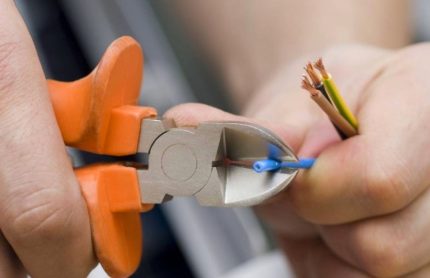
In order to minimize all risks, special tools and methods for working with them were developed.
The difference between wire and cable
When wiring is described, the term “wire” or “cable” is often used as a current conductor. To an uninitiated person in the subtleties of electricians, it may seem that this is one product. In fact, they are different.
A wire in the traditional sense is a cord with a small cross section. Such a conductor is single or multi-core.He may not have isolation at all, and if he does, then it is light in the form of a tube. It’s not difficult to remove it.
A cable consists of a number of current carriers. They are connected as a whole, but do not touch each other and are enclosed in a shell of special material.
For a wire with one core, the cross-section defines one core, and for a multi-core, the cross-sectional area forms the sum of the cross-sections of all the cores. To increase the performance properties of the cable, a nylon thread is introduced into the middle.
Any conductor should be handled with care, especially with aluminum conductors. Compared to copper, they are more fragile. Bending loads reduce the already small margin of safety of aluminum cores.
Some characteristics for comparison:
- density of aluminum - 2.7, copper - 8.9 t / mᶾ;
- multi-wire version for aluminum is excluded, for copper - is possible;
- the resistivity of aluminum is 0.0294, copper - 0.0175 Ohm x mm² / m.
Damage during stripping of aluminum conductors further reduces their characteristics.
More details about the types of cables and wires can be found in this stuff.
Varieties of insulation materials
Distinguish single and double insulation.
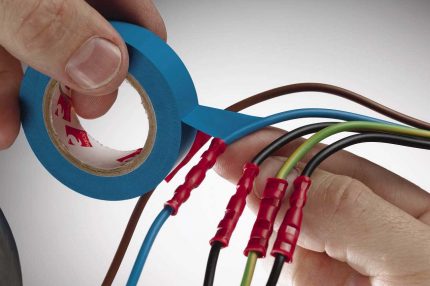
For its production, various insulating materials are used:
- Plastics based on organic compounds. These are mainly thermal plastics, which soften when heated. When burned, these plastics emit various toxins into the environment.
- Thermosetting plastics. They become harder when heated. Isolation of them is used only in special cases, when the requirements for it are increased.
- Natural or artificial rubber of different types. It hardens upon heating and supports combustion.
- Fabric based insulation. Withstands a fairly high degree of heating (maximum 400⁰) while maintaining insulating properties.
- Shielding braid. This is not insulation in the literal sense, since the braid does not fulfill the role of insulation, but it is a protection against mechanical damage.
- Armor braid. Also serves as protection against damage.
The choice of tools for stripping depends on what material it is made from.
How to strip wires correctly?
There are some nuances in this process, without knowing which, mistakes can be made with irreversible consequences.
The stripped area must not protrude beyond the connection. If you leave the exposed wire open, a person may accidentally touch it and suffer electric shock.
Insulation from the core must be removed from all sides. Compression of residual insulation will reduce the reliability of fastening.
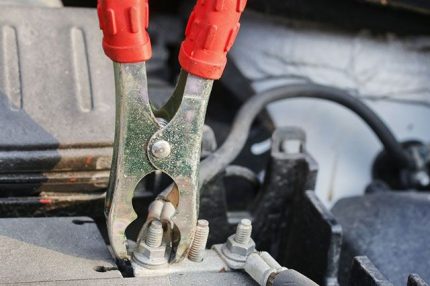
Incorrect stripping will cause a short circuit and even ignition.
Popular Stripping Methods
Practical skills play a large role in the process of stripping wire insulation. The main difficulties arise when working with thin wires, when every movement matters. Optimum pressure is generated only by practice.
The most commonly used methods for removing insulation are:
- with a knife;
- by means of side cutters;
- under the influence of high temperature;
- using a stripper.
Each of the options is preferred in specific circumstances.
Option No. 1 - the use of a knife for cutting insulation
At home, most often use a knife. It is important, using this simple tool, to choose the right angle of the blade. The biggest mistake is trimming in a circle with holding the cutting part in a perpendicular position. In this case, it is difficult to avoid notching the core or breaking the secondary insulation.
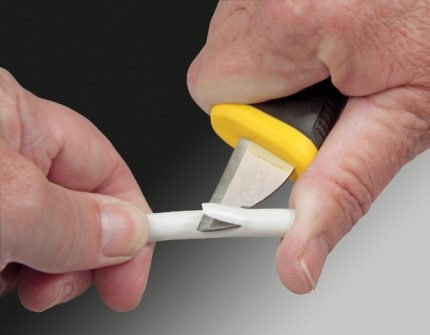
The correct position of the knife is when the tool and the axis of the wire are in the same plane. First, the braid is cut along the conductor. Then the insulation is separated, it is taken to the side and finally cut off at the base.
It is better to use a special electrician knife with a straight or curved blade to remove hard insulation from the wires. The main thing is that there are no barbs on it. If the knife is folding, it must be equipped with a lock so that it does not fold spontaneously.
In a good blade there is a double-sided sharpening at a small angle, an internal rounding of the cutting edge. Some versions of construction knives have a special blade design - it is short and rounded inward, and at the end there is a “heel”. It limits the depth of cut, which is important if it is necessary to remove the top layer of insulation without damaging the shell of individual cores.
Option No. 2 - side cutters for stripping insulation
Side cutters are a convenient and safe tool, but only if used correctly. What you should pay attention to is the direction of the cutting edges and the applied force.
The tool is used in two ways:
- The shell is cut from different sides, and then removed from the conductor. Such a method is suitable for working with a wire having a significant cross-section.
- The braid is fixed and cut with the cutting edges of the side cutter, and then pulled to the side, making axial movements.
In any case, you need to act very carefully, otherwise the conductor will either be damaged or bitten off.
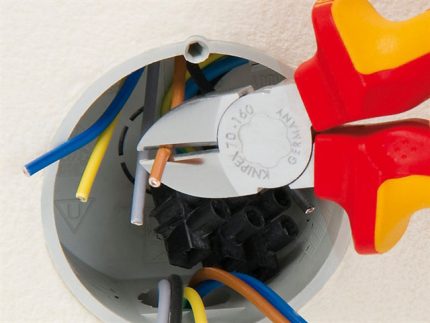
There are also side cutters with notches for conductors of a certain diameter. This simplifies the use of the tool at home.
Following the recommendations will minimize the risk of core biting. Also, proper use of the tool will relieve the use of large compressive forces.
Option No. 3 - thermochemical method of removal
With very thin conductors with a cross section of less than 0.2 mm, removing the insulation from an enamel wire or PVC wire mechanically is a big risk. The thermochemical method is more suitable here.
In the first case, the technology is as follows:
- The wire is conveniently laid on a flat surface. Under it, vinyl chloride insulation is placed.
- Heat the tip of the soldering iron and carefully guide it over the shell. When heated, it will disappear under the influence of released chlorine.
There is another option for removing enameled insulation from the cable. A tablet of aspirin is placed on the wire, it is heated with a soldering iron and distributed along the entire length. Not only removal of insulation will occur, but also wire tinning.

Braid removal by reflow guarantees the integrity of the conductor. The method works well on old wiring, since the winding here is hard and brittle.
Stripping the insulation of a thin enameled conductor can be done with fine sandpaper. Before removing the insulation layer from the wire, the sheet is bent in half so that the emery is inside. A wire is brought into the middle, slightly pressed with its fingers and pulled. Repeat the action until the enamel is completely cleansed.
Option number 4 - stripper stripping
If the considered methods of stripping are considered manual, some types of strippers allow to partially mechanize this work. The tool most often is a special pliers that work with a certain size of wires and cables.
Conventionally strippers are divided into categories:
- miniature hand;
- large rack and pinion;
- lever.
The first have the appearance of clothespins. In the spring-loaded jaws, it has holes - one or more. There are small multifunctional strippers and in the form of a similar case. Holes with knives were made in the drop-down case for different sections of the cores.
In addition, the device has a knife that cuts the braid in the longitudinal direction, a knife working in the transverse direction or cutting circularly. Equip them with a retractable knife for stripping the wire.
The next design is a stripper with levers. Visually, the tool is similar to scissors and includes:
- Knives with a wedge-shaped cut;
- The adjusting screw, with its help, set the desired section.
Clips fix the cable, then reduce the levers and the insulation is removed instantly. The removal length is set manually. The main disadvantage is the need for tuning in the case when the insulation is removed from wires of different sections.
If you mistakenly insert a thick wire when setting the jaws to a smaller cross section, the conductive core will be damaged.

In addition to the basic functions, most of these hand tools are used for crimping the tips of multi-wire strands, cutting wires, cutting bolts. Sometimes they are used as simple pliers.
The tool with sockets in the blades, like the previous one, is universal. When working with it, you must not weaken your attention so as not to place the current conductor in the hole that does not correspond to its cross section.
These drawbacks are not characteristic of automatic lever strippers. The wire size here is set automatically. The spring-loaded working element begins to act when the grips are compressed. You can remove not only the insulation from the core, but also the outer braid from the wire round or flat.
Many models are equipped with a length limiter that allows you to remove the braid to a specified length. The required limit is set once, and further withdrawal occurs at the set limit.
Automatic models, like manual ones, may have additional functionality - crimping tips, cutting and more.
Choosing a stripper model, you need to proceed from where it is planned to be used. For ordinary work at home, a simple hand tool is suitable.
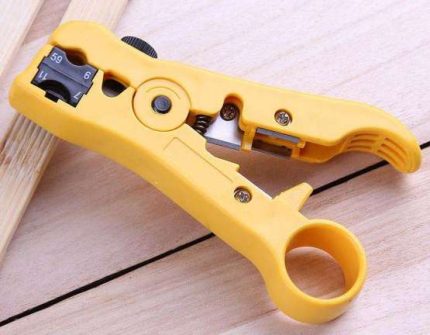
When working with a mass of wires and cables, it is better to arm yourself with a semi-automatic or automatic device. This tool is necessary for professional electricians.
There is an article on our website where we talked in detail about strippers for stripping wires. Go on the link to familiarize yourself with the material.
New stripping tools
Relatively recently assortment stripping tools four new products were added:
- a plow knife for removing hard insulation;
- stripper for cutting insulation 2.9 - 6.6 mm² in the longitudinal direction;
- tool for working with wire insulation 0.05 - 2.5 mm²;
- wire cutting tool 0.25 - 6 mm².
All of them are released by the US company Jonard Tools.
The new case-type stripper is equipped with five grooves with a diameter of 2.9 - 6.8 mm. Blades are available both above and below. Cuts longitudinally wires, optical modules, protective tubes.
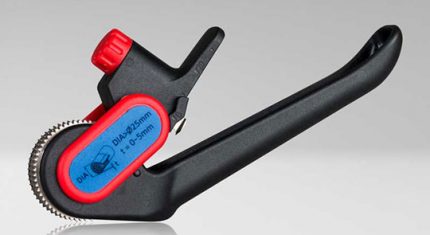
Stripper for removing the insulating layer of PVC from cables with a diameter of 0.05 - 2.5 mm² is automatically adjusted to the required section.When pressure is applied to the handle, the conductor is captured, the blades enter the insulation and tighten it.
The latter model is similar to the previous one, but works with wires of other sections.
Quick stripping recommendations
There are non-standard situations from which it is difficult even for a specialist to get out. At the same time, you have to make creative decisions and use improvised tools. Let's look at a couple of examples.
Example 1 - Damage to the wires leading to the plug
The method is applied if, during a visual inspection, it is found that the charger has defective thin wires leading to the plug. The main difficulty of the situation is not only in the small cross section, but also in the multicore cable. The fact that the wires are enclosed in a continuous braid is also problematic, so the insulation serves not just as protection, but as a two or three-chamber collector.
In order to remove the insulation quickly in this case, specialists use a thin blade removed from the cassette from the razor. The cable is fixed by means of a clamp from a table lamp or vice. The cable is divided into cores, with a blade, they carefully cut an incision in the right place not too deep. Next, part of the layer is pinned with a fingernail and carefully removed.
Example No. 2 - removing protection from a cable in a busy area
There is a need to remove cable protection on the loaded area of the power grid.
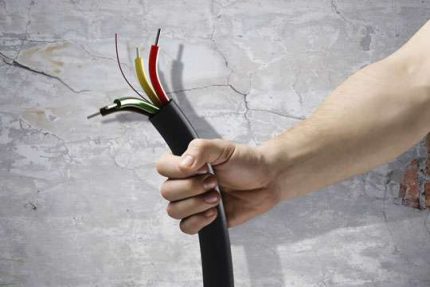
First, using the tool, they get rid of the outer shell by cutting it along the cable. Then, using pliers, one vein is removed. The remaining insulating layer is simply cut off.
Safe Stripping Tips
The work associated with electric current is not easy. Therefore, even with certain knowledge, one must not forget that a damaged core will eventually fail.
For safety reasons, when stripping the insulation a little longer than required, the excess must be cut off. Too dangerous are bare veins.
It is not advisable for a home foreman to purchase expensive tools in order to use them several times, removing insulation. In most cases, simple tools at hand are quite suitable.
When working with a tool, you need to be extremely careful and attentive. Insulation should be pushed slowly to avoid core damage.
Microscopic damage to the conductors is invisible, therefore it is better to do everything more slowly, but correctly, so as not to have big problems afterwards.
To ensure reliable and safe contact, special terminal blocks.

Contact in the case of installing a piercing clamp will provide a puncture insulation. Sometimes this is enough.
Conclusions and useful video on the topic
An overview of stripping tools - from the cheapest to the most expensive:
Whatever method you use to strip insulation, you need to remember that this work is dangerous. Attentive and competent attitude to the used tool will help to avoid problems. Each product must be used in accordance with its intended use, with utmost care.
And what method do you use to remove the insulation from the wires? Please share your own experience with people who first encountered such a task. Leave your comments, share experiences, ask questions in the block under the article.

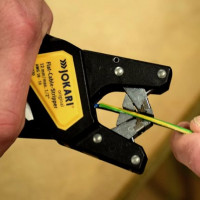 Stripper for stripping wires: rules for selecting a tool for stripping cable and wires
Stripper for stripping wires: rules for selecting a tool for stripping cable and wires 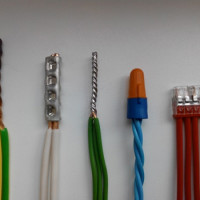 Methods of connecting electrical wires: types of connections + technical nuances
Methods of connecting electrical wires: types of connections + technical nuances 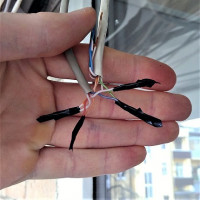 How to connect a twisted pair cable to each other: methods + instructions for building up a twisted wire
How to connect a twisted pair cable to each other: methods + instructions for building up a twisted wire  Wago terminal blocks: varieties and their characteristics + subtleties of connecting wires with Vago terminal blocks
Wago terminal blocks: varieties and their characteristics + subtleties of connecting wires with Vago terminal blocks 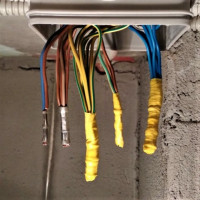 How to connect wires without soldering: the best ways and their features + installation recommendations
How to connect wires without soldering: the best ways and their features + installation recommendations 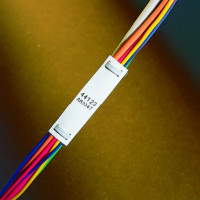 What cable to use for wiring in the apartment: a review of the wires and choosing the best option
What cable to use for wiring in the apartment: a review of the wires and choosing the best option  How much does it cost to connect gas to a private house: the price of organizing gas supply
How much does it cost to connect gas to a private house: the price of organizing gas supply  The best washing machines with dryer: model rating and customer tips
The best washing machines with dryer: model rating and customer tips  What is the color temperature of light and the nuances of choosing the temperature of the lamps to suit your needs
What is the color temperature of light and the nuances of choosing the temperature of the lamps to suit your needs  Replacement of a geyser in an apartment: replacement paperwork + basic norms and requirements
Replacement of a geyser in an apartment: replacement paperwork + basic norms and requirements
I do not understand wires and electronics at all and it was very useful to start from the very basics. Thanks to the author, I thought about such simple things they don’t write, since everyone understands it anyway.
Anton, you need to know simple things too. You will be surprised how many people who consider themselves electricians do them wrong.